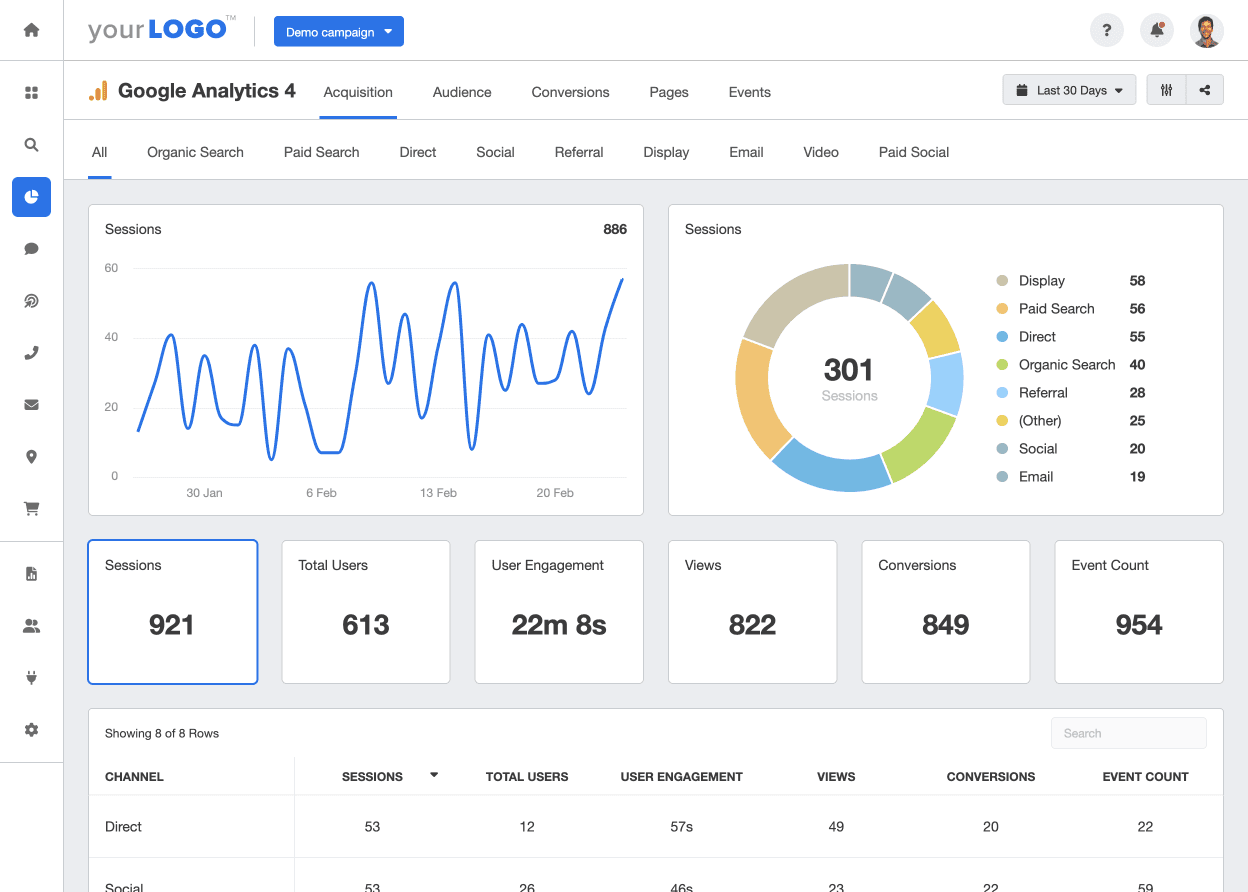When Does the Google Analytics Tracking Code Send an Event Hit to Analytics? Timing and Finest Practices Explained
When Does the Google Analytics Tracking Code Send an Event Hit to Analytics? Timing and Finest Practices Explained
Blog Article
Master Web Site Insights With Accurate Google Analytics Tracking Code
The reliable usage of Google Analytics depends upon the precise execution of its tracking code, a basic action commonly ignored by internet site proprietors. This seemingly basic JavaScript fragment, when correctly put, becomes the foundation of data collection, giving insights right into individual actions and website performance. Nonetheless, challenges can emerge during setup, potentially skewing the data and resulting in mistaken decisions. Recognizing these ins and outs is vital for taking full advantage of the benefits of analytics. What are the typical mistakes that could threaten your monitoring efforts, and exactly how can you make sure precision in your method?
Comprehending Google Analytics Essentials
Google Analytics is a vital device for website owners and marketing professionals, providing indispensable understandings into individual actions and web site efficiency. At its core, Google Analytics accumulates data regarding visitors to a web site, allowing individuals to examine metrics such as web traffic sources, individual interaction, and conversion prices. Recognizing these principles is crucial for maximizing a website's effectiveness and improving individual experience.
The platform employs cookies to track interactions, videotaping data such as page sights, session durations, and bounce prices. This information is aggregated and offered through personalized control panels, allowing users to picture patterns over time. Secret performance indicators (KPIs) can be kept track of, such as the total variety of users, new versus returning site visitors, and the geographic distribution of the audience.
Additionally, Google Analytics offers division attributes, allowing users to separate certain website traffic resources or individual demographics for more targeted analysis. By mastering these fundamental elements, website owners can make enlightened choices concerning web content method, advertising and marketing projects, and overall site improvements. Inevitably, comprehending Google Analytics fundamentals is necessary for leveraging information to drive development and attain organization objectives properly.
Establishing Your Monitoring Code

Replicate the provided monitoring code and paste it right into the HTML of your internet site. Preferably, this code ought to be put in the header section of every page you want to track. This makes certain that the tracking code lots before any various other content, allowing it to capture data precisely. If you are making use of a content monitoring system (CMS) like WordPress, there are plugins available that simplify the assimilation procedure.
After setup, validate that the tracking code is operating appropriately by making use of Google Tag Aide or the Real-Time records in Google Analytics - when does the google analytics tracking code send an event hit to analytics?. This step is important to confirm that your data collection is accurate and energetic, establishing the foundation for informative evaluation
Common Monitoring Code Issues
Many internet site proprietors run into typical problems with their Google Analytics tracking code that can prevent data collection and evaluation. One prevalent issue is inappropriate installation. This may happen when the monitoring code is positioned in the wrong section of the web site's HTML, typically bring about insufficient or missing data. Furthermore, having numerous instances of the monitoring code on a solitary page can cause inflated metrics, as customer communications may be counted greater than when.
Another problem emerges from the usage of advertisement blockers, which can avoid the monitoring code from executing altogether, therefore skewing data. when does the google analytics tracking code send an event hit to analytics?. Furthermore, failure to configure filters properly can bring about the exclusion of essential traffic sources or the addition of undesirable referral spam, misshaping the information accumulated
Website proprietors might also neglect the importance of tracking code updates, particularly when moving to Google Analytics 4 (GA4) from Universal Analytics. Last but not least, not enough my review here screening prior to releasing adjustments can cause undiscovered mistakes in the monitoring code, additionally complicating data integrity. Resolving these common problems is critical for ensuring accurate monitoring and insightful analytics.
Studying Site Information Successfully
Precise information collection is only the very first step in leveraging Google Analytics; the actual worth lies in properly examining that data to drive enlightened decision-making. To accomplish this, it is necessary to identify essential performance signs (KPIs) that align with your company objectives. Emphasis on metrics such as conversion rates, customer engagement, and website traffic resources, as these will certainly supply insights right into customer behavior and the general efficiency of your site.
Using Google Analytics' segmentation features allows for a much deeper understanding of your target market. By breaking down data into particular demographics, habits, and website traffic channels, you can discover patterns and patterns that you could look here educate targeted techniques. Executing custom records and dashboards can simplify this procedure, making it possible for fast access to relevant information.
Moreover, on a regular basis evaluating information fads with time aids to determine anomalies and opportunities for renovation. Use visualization devices to present information in a conveniently digestible style, facilitating extra efficient communication with stakeholders. Ultimately, the ability to evaluate internet site data properly equips businesses to make strategic decisions that improve individual experience, enhance marketing efforts, and drive development.

Ideal Practices for Accurate Tracking
Executing efficient tracking methods is essential for getting reliable information in Google Analytics. To guarantee exact monitoring, begin by correctly installing the Google Analytics tracking code on every page of your internet site. This can be achieved with a tag supervisor or by directly installing the code into the HTML.
Next, configure your Google Analytics account to omit internal traffic. This can be done by establishing filters that recognize and get rid of visits from your organization's IP address, thereby protecting against skewed information. Furthermore, make use of event monitoring to monitor particular customer communications, such as downloads or video clip plays, which common web page sights may ignore.
Regularly investigate your tracking arrangement to confirm that all attributes, such as goals and ecommerce tracking, are operating appropriately. Develop a regular identifying convention for your occasions and campaigns to help with much easier coverage and evaluation.
Lastly, take into consideration leveraging UTM parameters for campaigns to acquire understandings right into the performance of different advertising and marketing efforts. By adhering to these best techniques, you can improve the precision of your information collection and evaluation, inevitably causing even more educated decision-making for your internet site.
Final Thought
By guaranteeing the monitoring code is appropriately positioned and routinely investigated, site proprietors can catch crucial customer communication More Bonuses data, therefore promoting the recognition of essential performance indications. Ultimately, a robust monitoring framework enhances the capacity to drive interaction and boost total internet site efficiency.

Inadequate testing prior to introducing changes can result in undetected errors in the monitoring code, even more making complex data reliability.Implementing reliable monitoring methods is vital for getting trusted data in Google Analytics. By making certain the monitoring code is appropriately put and frequently examined, internet site proprietors can capture essential individual communication data, hence helping with the identification of key efficiency indicators.
Report this page